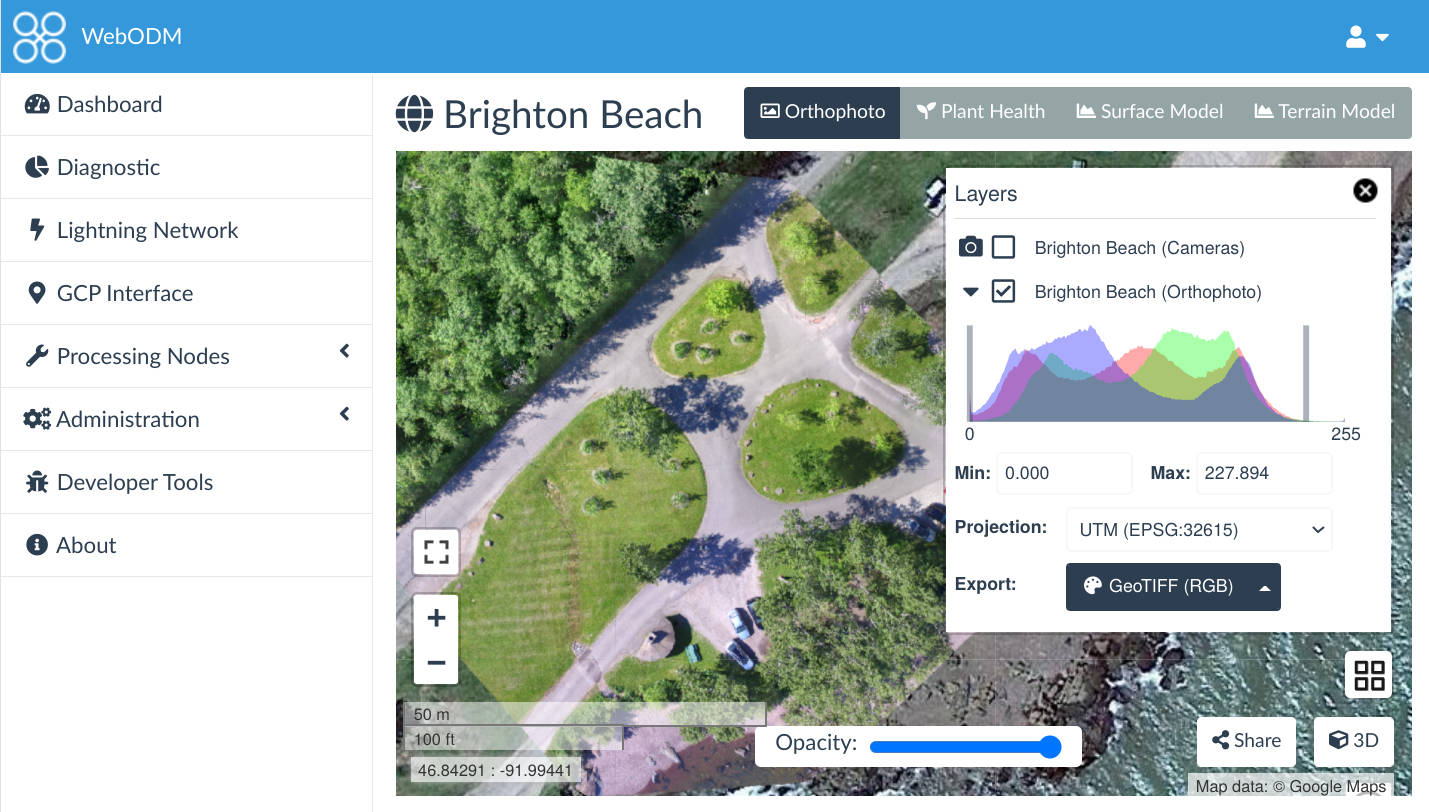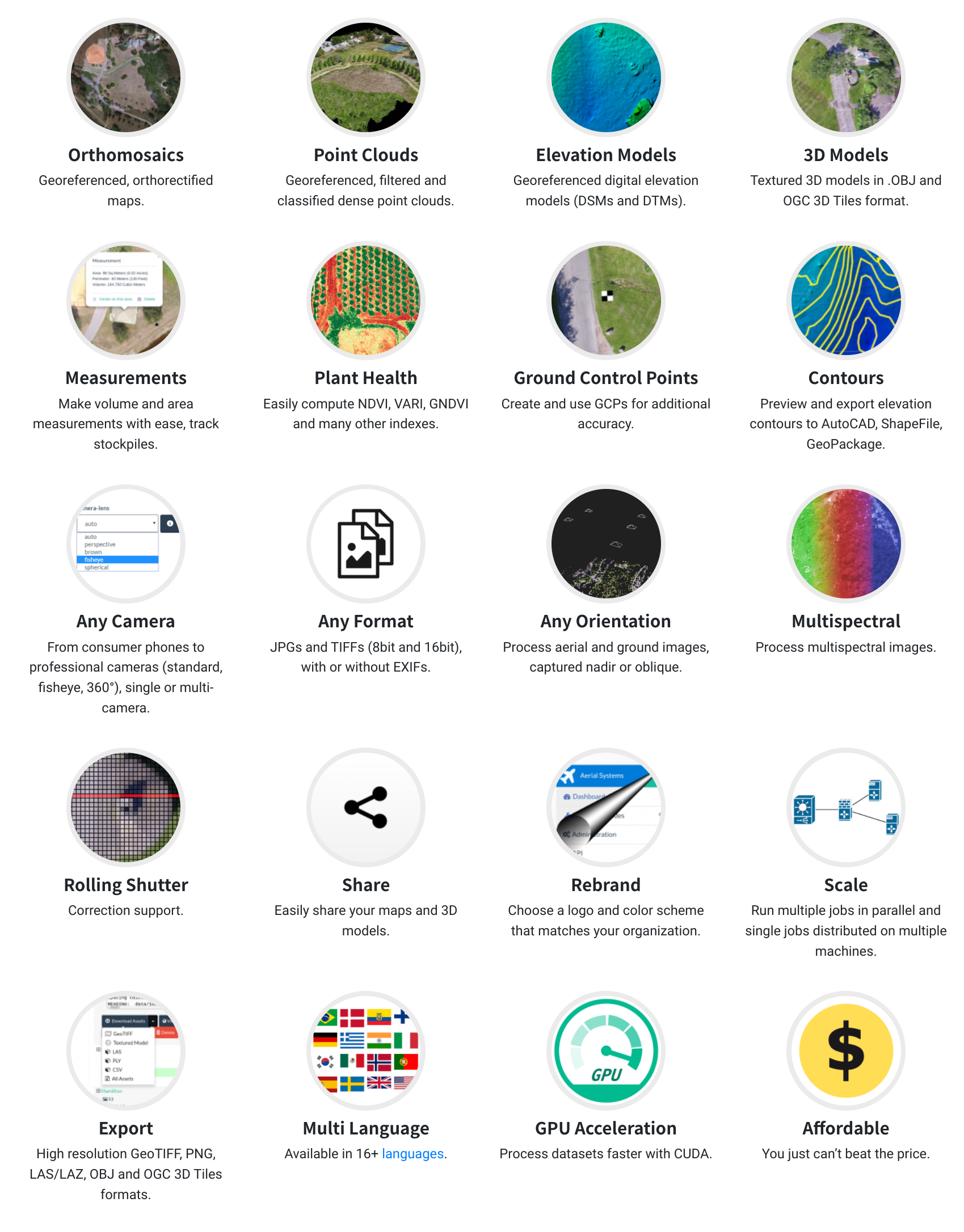Documentation
WebODM is a user-friendly, commercial grade software for drone image processing. Generate georeferenced maps, point clouds, elevation models and textured 3D models from aerial images. It supports multiple engines for processing, currently ODM, MicMac and LGT.


Getting Started
Section titled “Getting Started” Installation How to quickly get the software up and running on your machine.
Hardware Requirements The recommended machine specs for running the software
Common Tasks Resetting passwords, backups, restore and other common tasks
Frequently Asked Questions Check here before asking on the community forum
Getting Help
Section titled “Getting Help”We have several channels of communication for people to ask questions and to get involved with the community:
The preferred way to communicate is via the Community Forum.
Additional Resources
Section titled “Additional Resources”License
Section titled “License”WebODM is licensed under the terms of the GNU Affero General Public License v3.0.